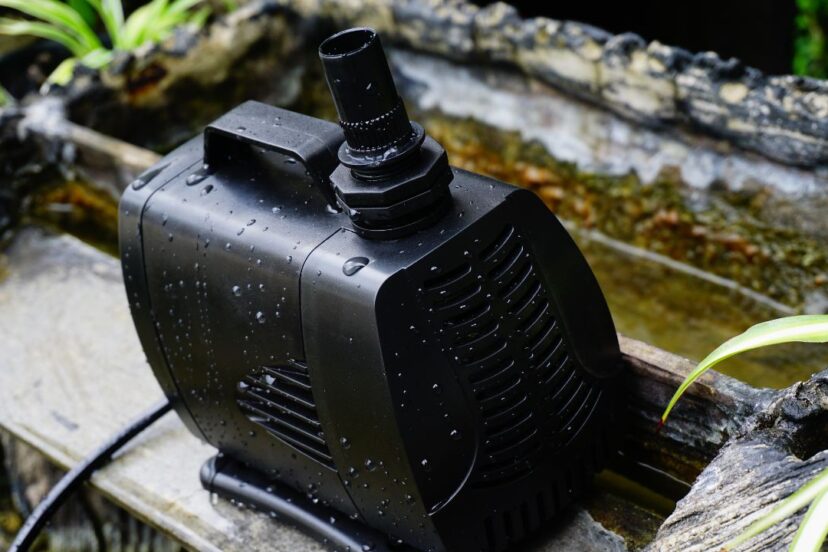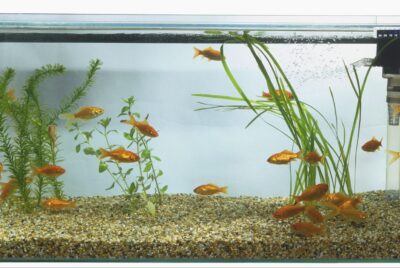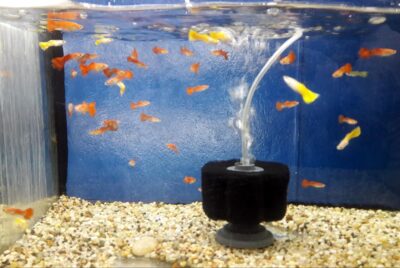Aquarium Sump Pump
As an avid fishkeeper, I understand the importance of maintaining a healthy and vibrant aquatic environment for our beloved aquatic companions. When it comes to creating the ideal conditions for your aquarium, one essential component that often gets overlooked is the aquarium sump pump. In this article, I will guide you through the world of aquarium sump pumps, providing valuable insights and recommendations to help you make informed decisions.
Introduction
Aquarium sump pumps play a crucial role in maintaining optimal water conditions in your aquarium. They are a key component of any advanced filtration system, ensuring proper water circulation and filtration. By understanding the significance of an aquarium sump pump and choosing the right one for your setup, you can greatly enhance the health and longevity of your aquatic ecosystem.
What is an Aquarium Sump Pump?
At its core, an aquarium sump pump is a device that helps remove water from your aquarium, directing it to a separate reservoir called a sump. The sump serves as a secondary filtration system, allowing for mechanical and chemical filtration processes to take place outside the main tank. The sump pump facilitates the movement of water between the aquarium and the sump, promoting efficient filtration and maintaining water quality.
Importance of an Aquarium Sump Pump
Enhanced Filtration: An aquarium sump pump significantly increases the filtration capacity of your setup. It enables the use of larger filtration media, such as protein skimmers, bio balls, and chemical reactors, which are not practical to include within the main tank. This extra filtration power leads to cleaner, clearer water, reducing the accumulation of harmful substances and promoting a healthy environment for your fish.
Improved Water Circulation: Proper water circulation is vital for oxygenation and the removal of waste products. The sump pump aids in maintaining a consistent flow of water throughout the aquarium, preventing dead spots and ensuring that all areas receive adequate oxygen and nutrients. It also helps distribute heat evenly, preventing temperature fluctuations that can stress your fish.
Noise Reduction: By relocating the equipment that generates noise, such as protein skimmers or air pumps, to the sump, an aquarium sump pump can significantly reduce the overall noise level of your aquarium setup. This creates a more peaceful and enjoyable environment for both you and your fish.
Choosing the Right Aquarium Sump Pump
Selecting the appropriate aquarium sump pump is crucial for maximizing its benefits. Here are some factors to consider when making your decision:
Flow Rate and Head Pressure
The flow rate and head pressure of an aquarium sump pump are essential considerations. The flow rate determines how much water the pump can move per hour, while head pressure refers to the resistance the pump can overcome in pushing water through pipes and equipment. It’s crucial to choose a pump with the right flow rate and head pressure for your aquarium size and filtration needs.
Energy Efficiency
Opting for an energy-efficient aquarium sump pump not only helps reduce your carbon footprint but also saves you money on electricity bills. Look for pumps that are designed with energy-saving features, such as adjustable flow rates and efficient motor technology.
Durability and Noise Level
Investing in a high-quality pump ensures its longevity and reliability. Look for pumps made from durable materials and equipped with noise-reducing features. Silent operation is key, as excessive noise can disrupt the tranquility of your living space.
Size and Space Requirements – (Aquarium Sump Pump)
Consider the dimensions and space requirements of the pump, ensuring it fits within your existing aquarium setup. It’s important to have adequate space for easy installation, maintenance, and potential future upgrades.
Installing an Aquarium Sump Pump
The installation process of an aquarium sump pump may vary depending on your specific setup. However, here is a general step-by-step guide to help you get started:
Planning: Determine the optimal location for your sump and ensure it is easily accessible for maintenance. Take measurements to ensure a proper fit.
Assembling the Sump: Set up the sump by connecting the necessary components, such as overflow boxes, baffles, and filter media chambers. Ensure proper sealing to prevent leaks.
Connecting the Plumbing: Install the necessary plumbing, including pipes, valves, and fittings, to connect the sump to the aquarium. Consider using flexible tubing for easier installation and maintenance.
Priming the Pump: Fill the pump and plumbing system with water to ensure proper priming. This helps prevent airlocks and ensures smooth operation.
Testing and Adjustments: Start the pump and check for any leaks or irregularities. Make necessary adjustments to the flow rate and head pressure based on your aquarium’s specific needs.
Monitoring: Regularly monitor the sump pump and observe water levels, flow rate, and any signs of malfunction. This ensures the proper functioning of your aquarium’s filtration system.
Maintaining an Aquarium Sump Pump
Proper maintenance is essential to keep your aquarium sump pump running smoothly and efficiently. Here are some maintenance tips to follow:
Regular Cleaning: Periodically clean the pump and remove any debris or buildup that may impede its performance. Refer to the manufacturer’s instructions for specific cleaning recommendations.
Inspecting Seals and Connections: Check the seals, gaskets, and connections regularly for signs of wear or leaks. Replace any damaged components promptly to prevent water damage or loss of filtration efficiency.
Monitoring Water Levels: Keep an eye on the water levels in the sump and ensure they remain within the recommended range. Adjust water levels as needed to maintain proper functionality.
Replacing Consumables: Replace filter media, such as activated carbon or filter pads, according to the manufacturer’s recommendations. This ensures effective filtration and prevents clogging.
Routine Maintenance Schedule: Establish a routine maintenance schedule to stay organized and prevent neglect. Regularly inspect and clean the sump, check pump performance, and perform any necessary adjustments or replacements.
Troubleshooting Common Issues with Aquarium Sump Pump
Despite proper maintenance, aquarium sump pumps may encounter occasional issues. Here are some common problems and their possible solutions:
Loud Operation: If your pump is producing excessive noise, check for loose parts, debris, or air in the system. Ensure all connections are secure and clean any obstructions.
Low Flow Rate: A reduced flow rate can indicate clogged filter media or impeller blockage. Clean or replace the affected components to restore optimal flow.
Leaks: Leaks can occur due to damaged seals, cracked pipes, or loose connections. Inspect the system carefully, replace faulty components, and apply sealant or Teflon tape as necessary.
Overheating: Overheating may result from insufficient water levels or a malfunctioning pump. Check water levels, adjust flow rates if necessary, and ensure the pump’s motor is running smoothly.
If you encounter persistent issues or are unsure how to resolve them, consult a professional or seek guidance from experienced aquarium enthusiasts.
Upgrading Your Aquarium Sump Pump
As your fishkeeping journey evolves, you may consider upgrading your aquarium sump pump to meet changing needs. Here are some reasons why an upgrade may be beneficial:
Increased Filtration Capacity: Upgrading to a larger or more advanced sump pump allows for the incorporation of additional filtration equipment, enabling superior water purification and maintaining higher water quality.
Efficiency and Energy Savings: Newer sump pump models often feature enhanced efficiency, reducing energy consumption without compromising performance. Upgrading can lead to long-term energy savings and a reduced ecological footprint.
Quieter Operation: If noise is a concern, upgrading to a pump with noise-reducing features can significantly improve the tranquility of your aquarium setup.
Advanced Features: Upgrading your sump pump can provide access to advanced features such as variable speed control, automated monitoring systems, or remote operation capabilities. These features offer greater control and convenience in managing your aquarium.
Benefits of Using an Aquarium Sump Pump
Using an aquarium sump pump offers several benefits for fishkeepers:
Water Quality: By facilitating enhanced filtration and water circulation, an aquarium sump pump ensures optimal water quality, reducing the risk of waterborne diseases and promoting fish health.
Reduced Maintenance: The use of an aquarium sump pump simplifies maintenance tasks by centralizing the filtration process outside the main tank. This minimizes the frequency of cleaning and maintenance required within the aquarium itself.
Expanded Filtration Options: An aquarium sump pump opens up the possibility of incorporating a wider range of filtration equipment and media, allowing for more comprehensive and customizable filtration options.
Flexibility and Adaptability: The modular nature of aquarium sump pumps allows for easy modifications and upgrades, accommodating the evolving needs of your fish and aquatic plants.
Different Types of Aquarium Sump Pumps
There are various types of aquarium sump pumps available, each offering unique features and advantages. Here are some common types:
Submersible Sump Pumps: These pumps are placed directly inside the sump, submerged in water. They are compact, easy to install, and typically operate quietly.
External Sump Pumps: External pumps are positioned outside the sump and connected via plumbing. They often provide higher flow rates and greater flexibility for customization.
Return Pumps: Return pumps are specifically designed to push water back into the aquarium from the sump. They are an integral part of the sump system, ensuring proper water circulation.
Dosing Pumps: Dosing pumps deliver precise amounts of additives, supplements, or medications to the aquarium. They are commonly used in conjunction with sump systems to maintain water quality and supplement necessary elements.
Comparing Aquarium Sump Pumps
When choosing an aquarium sump pump, it’s essential to compare different models and brands to find the best fit for your needs. Consider the following factors during your evaluation:
Flow Rate: Determine the required flow rate based on your aquarium size and filtration needs. Look for a pump that can handle the desired water volume effectively.
Head Pressure: Assess the head pressure capabilities of different pumps to ensure they can overcome the resistance imposed by your filtration system and plumbing.
Energy Efficiency: Consider the energy efficiency rating of each pump and choose one that balances performance with reduced power consumption.
Noise Level: Check user reviews and specifications to gauge the noise level of each pump. Opt for a model that offers quiet operation, especially if noise is a concern in your living space.
Reliability and Durability: Research the reputation and customer feedback of different pump manufacturers to ensure you select a reliable and durable option.
Price and Warranty: Compare prices and warranty offerings to find a pump that provides good value for money and peace of mind.
Conclusion
Incorporating an aquarium sump pump into your fishkeeping setup can bring numerous benefits, from improved water quality and filtration to enhanced convenience and flexibility. By choosing the right pump, properly installing and maintaining it, and considering potential upgrades, you can create an optimal environment for your aquatic companions. Take the time to research and select a pump that suits your specific needs, and enjoy the rewards of a thriving and vibrant aquarium.
Frequently Asked Questions (Aquarium Sump Pump)
Q: Can I use an aquarium sump pump with any type of aquarium?
A: Yes, aquarium sump pumps can be used with various types of aquariums, including freshwater, saltwater, and reef tanks.
Q: How often should I clean my aquarium sump pump?
A: The cleaning frequency depends on several factors, such as the fish load, feeding habits, and the overall condition of your setup. It is generally recommended to clean the pump and inspect the system every 2-4 weeks.
Q: Can I install an aquarium sump pump myself, or do I need professional help?
A: If you have experience with aquarium setups and plumbing, you can likely install an aquarium sump pump on your own. However, if you are unsure or inexperienced, it is recommended to seek assistance from a professional or experienced aquarist.
Q: Are aquarium sump pumps noisy?
A: Some pumps can produce noise, especially if not properly maintained or installed. However, many modern pumps are designed with noise reduction features to ensure quiet operation.
Q: Can I upgrade my existing aquarium setup to include an aquarium sump pump?
A: Yes, it is possible to retrofit an existing aquarium with an aquarium sump pump. However, the installation process may vary depending on the specific setup and may require some adjustments to the plumbing.




